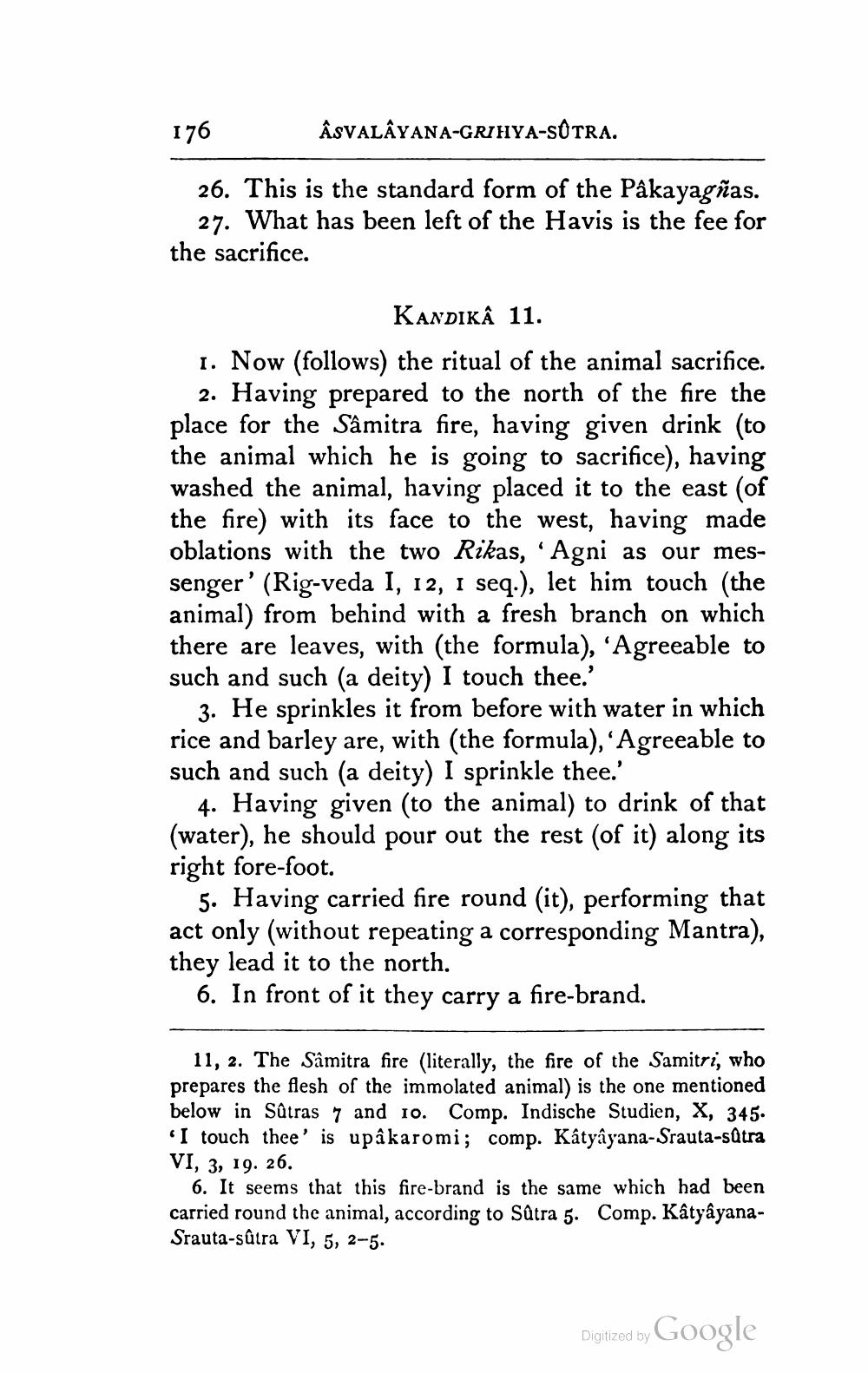________________
ASVALAYANA-GRIHYA-SUTRA.
176
26. This is the standard form of the Pâkayagñas. 27. What has been left of the Havis is the fee for the sacrifice.
KANDIKA 11.
1. Now (follows) the ritual of the animal sacrifice. 2. Having prepared to the north of the fire the place for the Sâmitra fire, having given drink (to the animal which he is going to sacrifice), having washed the animal, having placed it to the east (of the fire) with its face to the west, having made oblations with the two Rikas, 'Agni as our messenger' (Rig-veda I, 12, 1 seq.), let him touch (the animal) from behind with a fresh branch on which there are leaves, with (the formula), 'Agreeable to such and such (a deity) I touch thee.'
3. He sprinkles it from before with water in which rice and barley are, with (the formula), 'Agreeable to such and such (a deity) I sprinkle thee.'
4. Having given (to the animal) to drink of that (water), he should pour out the rest (of it) along its right fore-foot.
5. Having carried fire round (it), performing that act only (without repeating a corresponding Mantra), they lead it to the north.
6. In front of it they carry a fire-brand.
11, 2. The Sâmitra fire (literally, the fire of the Samitri, who prepares the flesh of the immolated animal) is the one mentioned below in Sûtras 7 and 10. Comp. Indische Studien, X, 345. 'I touch thee' is upâkaromi; comp. Kâtyâyana-Srauta-sûtra VI, 3, 19. 26.
6. It seems that this fire-brand is the same which had been carried round the animal, according to Sutra 5. Comp. KâtyâyanaSrauta-sûtra VI, 5, 2-5.
Digitized by Google




